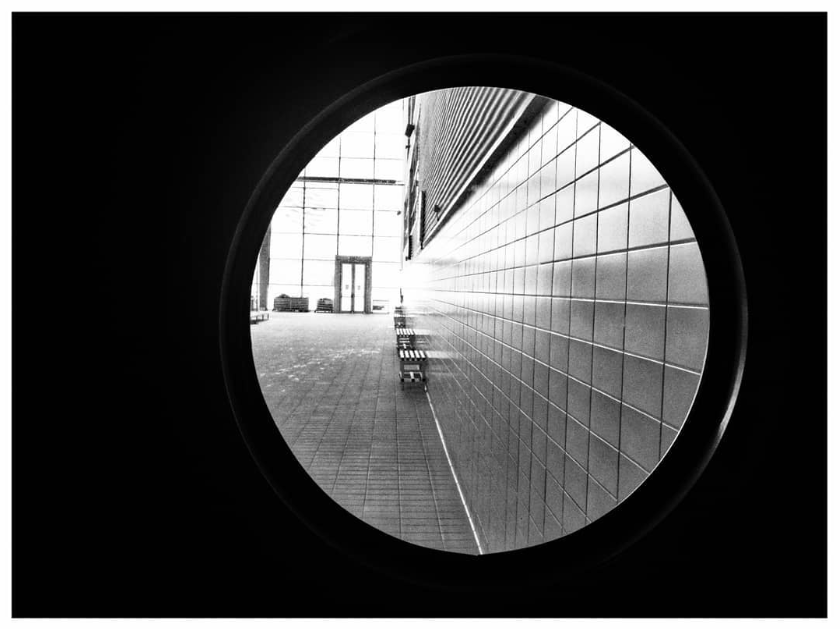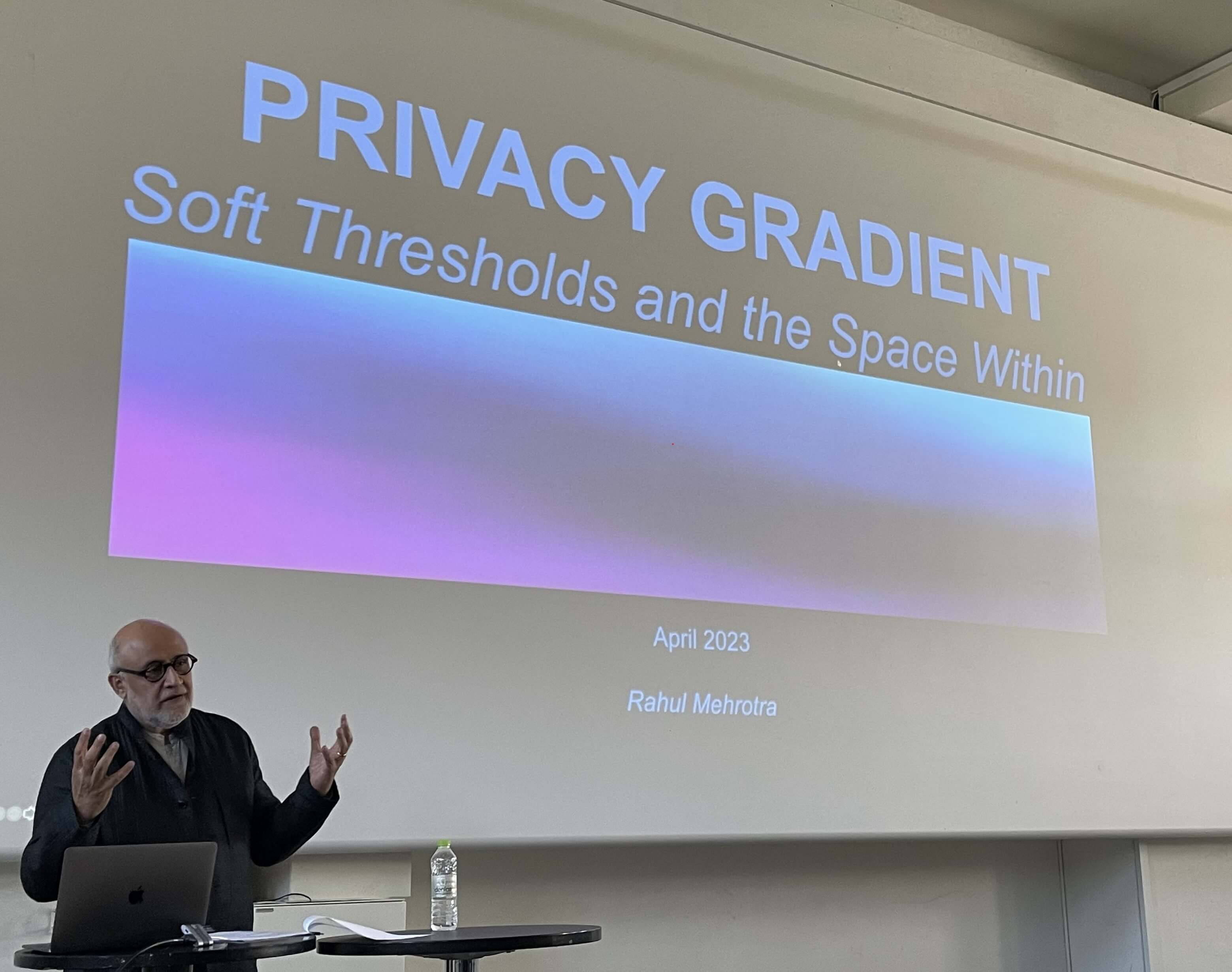Behind the scenes: Privacy Matters. How Interiors make and break our Cities
Nuno Grancho is a Marie Skłodowska-Curie Fellow at Centre for Privacy Studies. He holds a PhD in Architecture and Urbanism from University of Coimbra. Nuno organised the conference: Privacy Matters. How Interiors make and break our Cities in April 2023. Please find more information about Nuno Grancho on our staff list.
The conference examined links between cities, the built environment, the private and the public, the interior and the exterior, and between social and political processes and urban transformation.
Described as a moment of collective reflection, investigating the complex links between cities, the built environment, the private and the public, the interior and the exterior, Privacy Matters. How Interiors make and break our Cities is a multidisciplinary conference.
See the full program for the conference here.

We have asked Nuno about his thoughts on the conference and the outputs.
You described the conference as “a moment of collective reflection”. Is it possible to identify a red thread in your discussions?
Yes. Our discussions emphasised the importance of privacy as a key component of urban design and architecture. The leitmotifs of the conference were privacy, the interior, the exterior and the city, and these all highlighted the importance of designing urban environments that balance the needs and rights of individuals with other social, economic, and environmental considerations. There is a need for individuals to have control over their physical and psychological space within the city. We explored the ways in which design and infrastructure impacts on individuals’ agency, especially with regard to technology, social norms and cultural attitudes, community values, individual rights, and the different expectations around privacy.
But there were many moments of collective reflection, both before and during conference. The first such moment when individuals came together to engage in intellectual discussion and debate, were preliminary meeting between myself and Mette Birkedal Bruun and myself and Peter Thule Kristensen. Through creative brainstorming, we decided that we wanted PRIVACY to be the channel between the interior and the city.
The conference itself provided a unique opportunity for interdisciplinary and multidisciplinary dialogue on this subject between people from very different backgrounds and fields (architecture, urbanism, landscape, history, anthropology, etc.). The discussions during the conference fostered collaboration and networking, allowing individuals to connect with others who share interests and research goals regarding the private, the public, the interior, the exterior and the city. They also promoted something I think is rare in conferences: a sense of community and shared purpose. Together, we have begun developing a novel approach in Privacy studies, the urban.

Rahul Mehrotra, keynote speaker (Harvard University, Graduate School of Design), giving the final keynote lecture of the conference “Privacy Gradient: Soft Thresholds and the Space Within”.
The conference was “multidisciplinary”, and some of the presentations were historical in approach while others were aimed at contemporary issues, and some again were practical. Was there anything that surprised you in the relation between the different approaches?
The conference was multidisciplinary in its construction, but the knowledge production and its scholarly outcomes made it interdisciplinary. The conventional boundaries between the abovementioned fields and disciplines were challenged and a commitment to creating new interdisciplinary knowledge was born.
Both approaches - multidisciplinary and interdisciplinary - seek to integrate knowledge from multiple fields to solve complex issues. While they equally involve collaboration between different disciplines, there are some critical differences between them that were portrayed at the conference. It involved integrating knowledge and methods from the disciplines mentioned above to address the malleability of privacy. It complicated a deep understanding of different fields' perspectives, methods, and theories and the ability to synthesise this knowledge into a coherent framework. Privacy brought together knowledge and expertise from multiple disciplines integrating them into a single framework by attempting to connect or synthesise these contributions. Privacy was the instrumental concept - the bridge and the glue - for the interdisciplinarity of the presentations, questions raised and the following debates and answers.
The conference had a global perspective. Did any differences or similarities between the case studies strike you as particularly notable?
Privacy is often considered a Western concept disseminated globally through colonialism, globalisation, and technological advancements. The global dissemination of privacy as a concept has been driven by various factors, including the expansion of colonial powers and their imposition of Western values on colonised populations. Globalisation and the spread of Western culture through media, technology, and popular culture have also played a significant role in disseminating privacy as a concept.
But the concept and practices of privacy are diverse. They can encompass a wide range of meanings and interpretations depending on cultural, social, geographical and personal contexts (physical, psychological, spatial, cultural, technological and legal). Overall, the multiplicity of privacy highlighted the complexity and nuance of the concept and underscored the need for a flexible and adaptable approach and study of privacy from the different case studies. Privacy was recognised and valued in different ways across cultures and societies, as shown in the conference presentations.

Henriette Steiner (University of Copenhagen), presenting “Between passion and possession: women architects and the houses they built for family, love and work”.
What were the main insights related to privacy and the private?
The most important was discussing the relationships between privacy, interiors, and cities as complex, interdependent and interconnected concepts. This requires a deep understanding of the social, cultural, and environmental factors that shape our built environment and a commitment to designing spaces that prioritise people's well-being and quality of life.
Insights were generated within a host of subjects and on a very large scale. Due to the richness of this conference, I cannot but answer your question at some length:
The speakers presented knowledge regarding who makes private and public spaces, oral histories of privacy (Esra Akcan), thresholds, boundaries and filters of privacy (the window boxes of Sonja Dünpelmann), the in-between home and street, the in-between private and public, the in-between interior and exterior (Pari Riahi and Mette Mechlenborg), the representation of privacy (Private/Public, Individual/Collective, Domestic/Urban), the historical methodologies for the study of privacy in an urban context with digitalised layers of privacy and urbanity (Danielle van den Heuvel), the urban definitions of publicness and privacy, and privacy as a global phenomenon that aggregates cultural, social and political practices (Rahul Mehrotra). And this on a scale that went from something that is kept away from the public eye (as per Mathew Wells and Laurent Stalder’s presentation about the toilet) to the visibility and accessibility of information to a large audience (as per Rahul Mehrotra’s presentation about privacy, architecture and urbanism).
Ultimately, the conference’s success in the future will also depend on the ability to communicate its conclusions across disciplinary boundaries, understand and respect the perspectives of others, and work collaboratively to achieve a shared goal.
